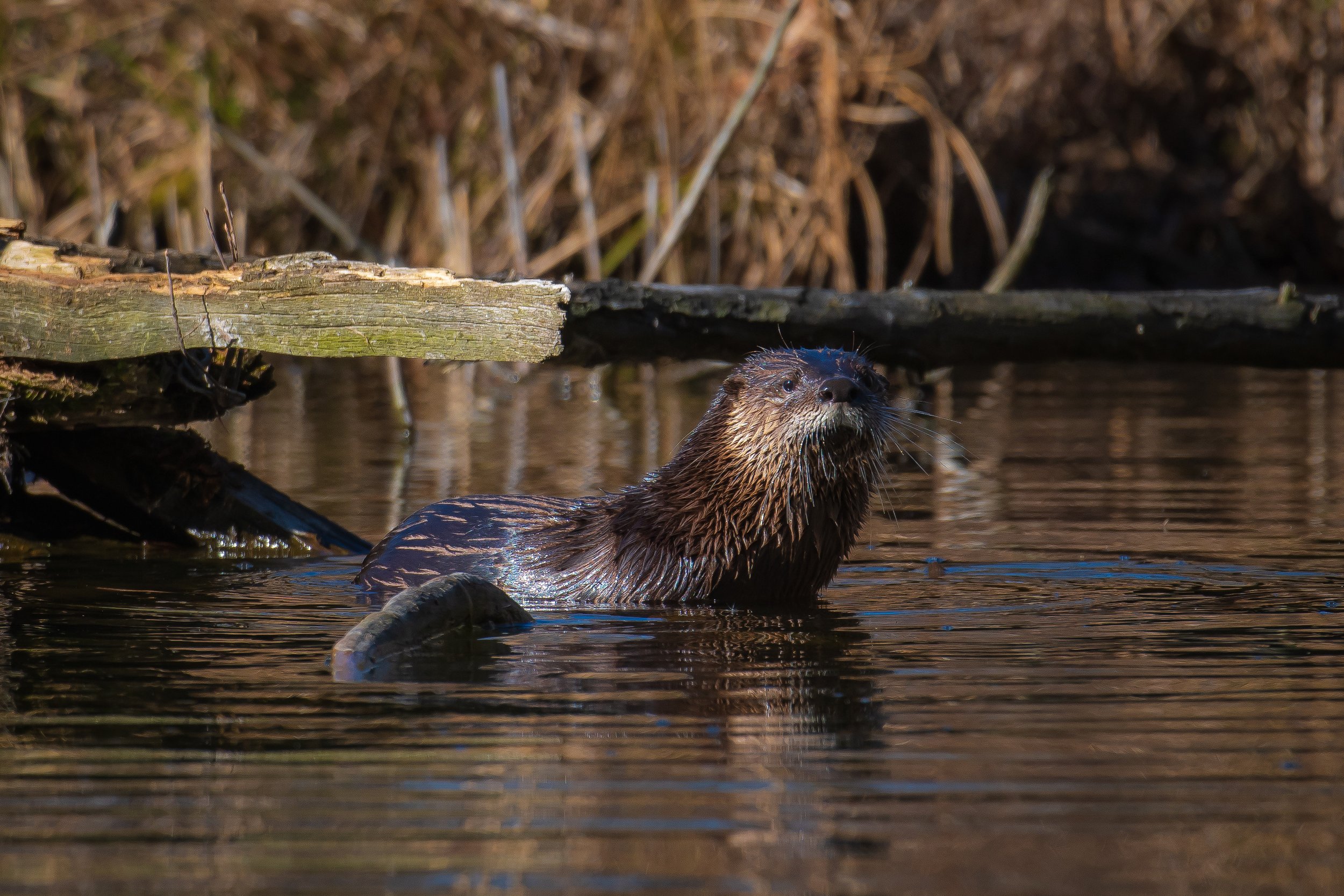Eight Species You Might Not Know We Have On Long Island
Written by Rich Nardo
Photography by Tony Trapani, Shane Etter, Meredith McCarthy, Garrett Camasi + Rich Nardo
Ask any wildlife enthusiast based on Long Island and they’ll tell you that our home turf does not get nearly the credit it deserves when it comes to species diversity. Let me assure you…we’ve got way more than raccoons and an east end full of deer in these parts.
This article is an attempt to call to attention just how robust and wild Long Island is. It won’t focus on the thousands of little creatures integral to our ecosystem, but rather some of the charismatic megafauna that somehow evades the collective common knowledge of what species we share our island with.
I am very appreciative of Tony Trapani (@tony_takes_photos), Shane Etter (@bigolemrkanish), Meredith McCarthy (@mere_cat), and Garrett Camasi (@creaturecatalog) for lending their brilliant photography to this article so that we could bring to life the eight highlighted species!
North American River Otter
Photo by Tony Trapani
River Otters are one of my favorite gem species we have on Long Island. They never venture into salt water, but they can be found around some of our fresh bodies of water such as lakes and rivers, as well as our brackish water outlets. While they are well suited to marine life with their streamlined bodies, webbed feet, and thick tapered tails, otters can also able to run as fast as they can swim. They’re super curious and “playful” and can often be found wrestling with or chasing other otters or using rocks in the water as toys. They are well-suited as hunters - with long sensitive whiskers, sharp teeth and strong jaws perfect for catching their favorite prey species such as amphibians, fish, turtles, crayfish, and crabs in the murky rivers in which they reside.
River Otters have thick, beautiful fur that was once prized by hunters and trappers. Thanks to a valiant conservation effort they are rebounding throughout the continental 48 states, Alaska, and Canada.
Reference: https://www.maritimeaquarium.org/meet-the-animals#item=402551
Coyote
Photo by Garrett Camasi
There is no shortage of media coverage around coyote sightings on Long Island over the past few years, most recently the rehabilitation of Wile E Coyote by Sweetbriar Nature Center. As one of the most adaptable species in North America and with an estimated population of about 30,000 in upstate New York , it’s no surprise that coyotes are beginning to establish themselves on Long Island. It’s believed that they first came to our parts from the Bronx around 2005. Today, there are at least nine coyotes spread across Long Island. More notably, there are several mating pairs living in northern Queens and Nassau County. One couple lives in a Nassau municipal park and the other lives on an estate in northwest Nassau County - the exact locations are not being revealed in order to protect their dens. With this development, we’re only a few short years away from the coyote being officially established on Long Island.
Coyotes are poised to play a HUGE role in our local ecosystem, helping to control the rampant deer population that is causing the number of ticks to skyrocket and damagin the long-term viability of our forest ecosystems. For more on coyotes on Long Island - please check out our recent article “The Native And The Newcomer” about coyotes and red foxes on Long Island.
Black and Turkey Vultures
Photo by Meredith McCarthy
We have not one, but TWO species of vulture on Long Island - the Turkey Vulture and the less common Black Vulture pictured above. When most people think about vultures, they think of arid deserts. But these birds of prey (read: opportunity) are incredibly wide spread. Unlike most raptors, vultures lack the sharp talons to snatch up their next meal. Instead, they rely on other skills, such as a highly developed sense of smell, to find their food. The prototypical scavenger, vultures glide gracefully through the sky sniffing out the scent of ethyl mercaptan (the chemical scent released by decomposing organisms). In a “Creature Feature” article from the Quogue Wildlife Refuge, Dan Defeo uses the perfect term for the misunderstood Turkey Vultures we have on Long Island: “Nature’s Sanitation Engineers”.
Diamondback Terrapin
Photo by Shane Etter
Did you ever see a turtle head bopping up and down in a waterway on Long Island? There’s a good chance that it was a Diamondback Terrapin. Diamondback Terrapins are the only turtle in the world that inhabits brackish water habitats such as salt marshes, tidal creeks, and shallow bays and harbors. They have special glands around their eyes that flush out excess salt, similar to that of sea turtles. This allows them to venture from their home base of brackish water into both freshwater and saltwater scenarios - making them the perfect resident of Long Island’s complex water systems.
Reference: https://longislandsoundstudy.net/2022/05/diamondback-terrapin-sound-fact/
Gray Tree Frogs
Photo by Shane Etter
Gray Tree frogs are more frequently heard than seen. They are a small breed of arboreal frogs with large discs (sticky pads) on their toes that allow them to stick to the trees they perfectly camouflage against. Their song is a “hearty trill” that can be heard in choir from high trees around ponds and swamps, particularly during breeding season from late April to July.
Reference: https://www.dec.ny.gov/docs/remediation_hudson_pdf/frogs.pdf
Italian Wall Lizard
Photo by Meredith McCarthy
These beautiful immigrants can be found scurrying around western Long Island these days but, not surprisingly, the ITALIAN Wall Lizard is not native to our lands. Also known as the Ruin Lizard, they were introduced to the Town of Hempstead around 1967, when a captive population was released (most likely by accident). They’ve since adapted beautifully to suburban life and have spread into isolated pockets of the City and as far north as the Bronx. Despite having an established population here, they have very little freeze tolerance and become inactive from November through March. So if you want to see these brilliantly colored lizards scurrying about, make sure you’re out looking for them in the spring and summer!
Reference: https://www.dec.ny.gov/docs/administration_pdf/lizards.pdf
Eastern Hognose Snake
Photo by Shane Etter
There used to be a considerable Eastern Hognose Snake population on Long Island, but now they exist only in isolated pockets. In fact, it was deemed extirpated in 1996 and considered no longer present here until its rediscovery in 2001. Eastern Hognose Snakes are completely harmless and non-venomous, but they prefer you keep that a secret. When they feel threatened, they will coil and flatten their head and neck to form a cobra-like hood. They’ll then puff out their body, hiss fiercely and bluff a violent attack (usually with its mouth closed and almost never actually making contact). If this doesn’t work, they’ll exaggeratedly fake their own death, let out a foul-smell, and turn on their back with its tongue hanging out of its mouth. They’ll remain still until they think the coast is clear. Once they feel the threat is over, they flip back over and go back about their merry way. With all of these TV and movie projects filming on Long Island lately, maybe they’re just looking for some good opportunities to be “discovered”.
Reference 1: https://www.bnl.gov/esd/wildlife/files/research/pdf/finn_paper_2005.pdf
Reference 2: https://portal.ct.gov/-/media/DEEP/wildlife/pdf_files/outreach/fact_sheets/hognosedsnakepdf.pdf
Monk Parakeet
Photo by Rich Nardo
I know, I know…if you’re a regular reader of this site, you’re sick of hearing me talk about the “JFK Parakeets”, but how could I not include them here? Much like the Italian Wall Lizard, Monk Parakeets are non-native species that you wouldn’t think could survive our harsh winters, but have managed to establish a thriving population on Long Island. It’s believed our population is the result of a broken cargo container at JFK in the 1960s that was carrying parakeets meant to be sold as pets. Today, they are a common sight (and sound) along most of the south shore of Long Island and at several other locations on Long Island and in the boroughs. You can read ALL about them in our article “The Monk Parakeet: A New York Success Story”.












Ask any wildlife photographer or explore based on Long Island and they’ll tell you that our home turf does not get nearly the credit it deserves when it comes to species diversity. In fact, I think it’s safe to say that most people think Long Island has a couple of raccoons, a possum here and there, and way too many deer out east and that basically sums it up.
This couldn’t be further from the truth. So for this article, we worked with some of the best wildlife photographers based on Long Island to highlight 10 species that most people might not know we have here.